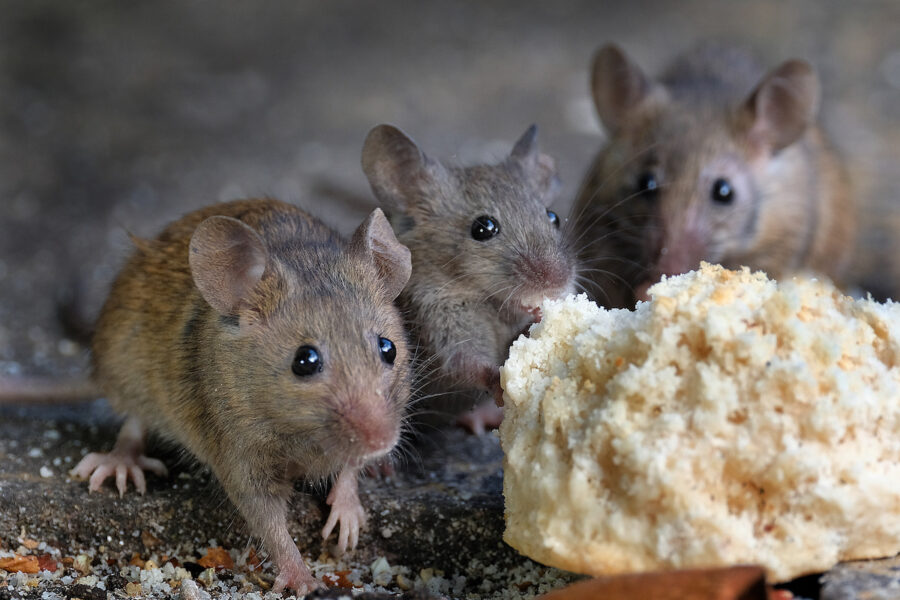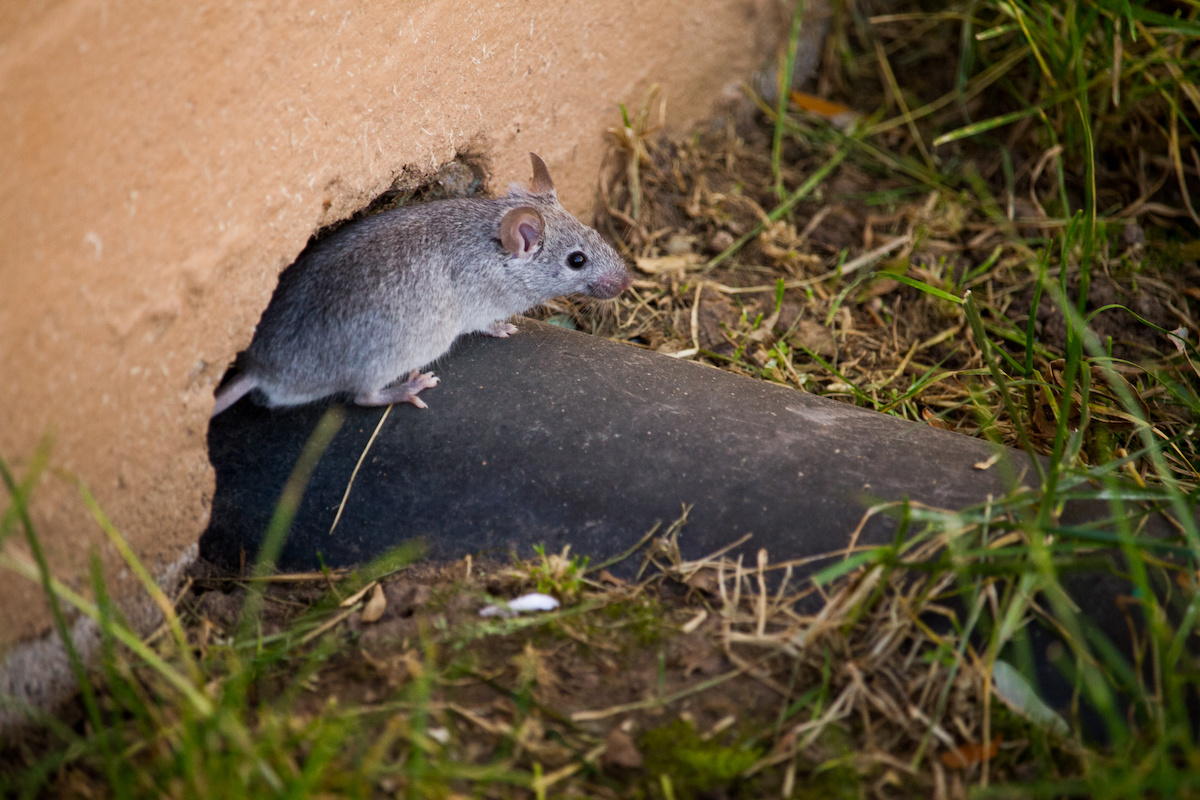
Mice are a common nuisance for homeowners, especially as seasons change and temperatures fluctuate. Knowing when to expect increased mouse activity can help you take the right preventive steps to keep these unwanted guests out of your home. At James River Pest Solutions, we understand how seasonal changes impact mouse behavior, and we’re here to share insights on when to be on high alert for potential infestations.
Understanding Mouse Behavior by Season
Mice are adaptable creatures that can survive in a variety of environments. Their need for warmth, shelter, and food drives their movements throughout the year. Let’s look at each season to understand how mouse activity changes, and when your home may be most at risk.
1. Winter: Prime Time for Mice to Move Indoors
Winter is typically when homeowners see the most mouse activity indoors. As temperatures drop, mice seek warmth and food sources, making your home an attractive option. Here’s what you need to know about mouse behavior in winter:
- Need for Warmth: Mice are cold-blooded, meaning they’re sensitive to low temperatures. During winter, they search for heated environments where they can stay warm and comfortable.
- Shelter: Mice look for safe, enclosed spaces to nest, especially near food sources. Basements, attics, and wall voids are common spots.
- Breeding: Even in winter, mice continue to reproduce, and a single mouse can quickly lead to an infestation.
How to Stay Alert:
- Seal Entry Points: Inspect your home for any cracks or openings, especially around windows, doors, and the foundation. Mice can squeeze through openings as small as a dime.
- Store Food Properly: Mice are excellent scavengers, so keep all food, including pet food, stored in airtight containers.
- Check for Droppings and Gnaw Marks: Winter is a good time to conduct routine checks for signs of mice, especially in hidden areas like cabinets, pantries, and behind furniture.

2. Spring: Increased Mouse Activity and Nesting
In spring, mice become more active as they adjust to warmer temperatures. The season offers ample food sources and shelter options, both indoors and outdoors.
- Nesting and Breeding: Spring is a breeding season for mice. With abundant food sources and milder temperatures, mice can breed rapidly. A single female mouse can have 5-10 litters per year, each containing 5-12 babies.
- Outdoor Food Sources: As plants and crops begin to grow, mice have more food options outside. However, they may still venture indoors to scavenge.
- Increased Movement: Mice tend to explore new territories in spring, which can increase their chances of entering your home.
How to Stay Alert:
- Inspect Your Yard: Remove debris, such as piles of wood or leaves, as these can serve as nesting sites for mice.
- Check for Nests Indoors and Outdoors: Look for any signs of nesting materials like shredded paper, fabric, or insulation.
- Seal Pet Doors: If you have pet doors, make sure they’re tightly sealed, as these can serve as entry points for mice.
3. Summer: Reduced Indoor Activity but Heightened Awareness Needed
Summer generally sees a decline in indoor mouse activity, as warmer outdoor temperatures mean mice are less dependent on indoor shelter. They tend to stay outdoors where food sources are abundant.
- Outdoor Nesting: Mice are more likely to nest in gardens, fields, or wooded areas where they can find food easily.
- Less Indoor Movement: While mouse activity indoors typically decreases, it’s essential to keep up with preventive measures to avoid any unexpected infestations.
- Damage to Landscaping: Mice may gnaw on plants, dig small holes in the soil, or burrow around foundations during summer.
How to Stay Alert:
- Maintain Landscaping: Regularly trim bushes, cut back vegetation, and remove weeds, as these can offer shelter to mice.
- Inspect Outdoor Structures: Sheds, garages, and other outbuildings are still at risk during summer, as they provide easy access and some shelter for mice.
- Secure Garbage: Ensure that garbage cans are tightly sealed to avoid attracting mice to your yard.
4. Fall: Preparing for Winter Invasions
Fall is another high-alert season for mouse activity indoors. As temperatures begin to drop, mice start looking for shelter to survive the colder months.
- Seeking Warmth: Much like winter, fall encourages mice to seek warm, sheltered environments.
- Building Nests: In preparation for winter, mice begin gathering nesting materials and building nests in areas where they feel secure.
- Stockpiling Food: Mice are instinctively driven to store food in preparation for colder months when resources become scarcer.
How to Stay Alert:
- Inspect and Repair Any Holes or Cracks: Check your home’s exterior for gaps that may have opened up over the year, especially around pipes, vents, and door frames.
- Clean Up Fallen Leaves and Debris: These can attract mice, as they provide excellent materials for nesting.
- Check Attics and Basements: Mice may enter your home during the fall and hide in rarely visited areas. Make a point to inspect attics, basements, and crawl spaces regularly.
Signs of Mouse Infestation: When to Take Immediate Action
Regardless of the season, there are certain signs that indicate a mouse infestation. Knowing these signs can help you act quickly to control the problem.
1. Droppings
Mouse droppings are small, dark, and pellet-shaped. You’ll usually find them near food sources, in drawers, or along baseboards.
2. Gnaw Marks
Mice gnaw on everything from furniture to electrical wires, which can pose a fire hazard. Look for gnaw marks on cables, baseboards, and food packaging.
3. Scratching Noises
Mice are nocturnal, so you might hear scratching noises at night, especially in walls, ceilings, or under floors.
4. Strong Odor
A strong, musky smell is often a telltale sign of a mouse infestation, particularly if they’ve nested in a confined area.
5. Footprints or Smudges
Dusty areas may reveal small footprints or tail marks. Grease marks or smudges along walls can also indicate mouse activity, as their fur leaves behind an oily residue.

Effective Prevention Tips for Each Season
Taking a proactive approach to mouse control can significantly reduce the risk of an infestation. Here are some practical prevention tips for each season:
- Winter: Conduct a thorough inspection and seal any cracks or gaps. Keep food stored securely and maintain a clean environment to avoid attracting mice.
- Spring: As the weather warms up, clear any debris from your yard and inspect your home for any signs of nesting. Be vigilant about storing pet food and bird seed properly.
- Summer: Focus on outdoor maintenance to reduce hiding spots for mice. Keep outdoor trash cans sealed and remove any food sources that could attract rodents.
- Fall: As fall arrives, perform a final inspection to seal any remaining entry points. Check your attic, basement, and crawl spaces for signs of mouse activity.
Why Seasonal Mouse Activity Matters
Understanding seasonal mouse behavior not only helps in preventing infestations but also allows you to address issues before they escalate. Mice are opportunistic and will readily enter any environment that provides food, water, and shelter. By taking seasonal precautions, you can prevent costly repairs, reduce health risks, and ensure your home remains a comfortable place for your family, not for pests.
When to Call a Professional
While there are numerous preventive measures you can take, sometimes an infestation requires professional help. Mice reproduce rapidly, and a small problem can quickly grow out of control. Here are some instances when it’s best to call a professional:
- Persistent Infestations: If you’ve taken preventive steps but continue to see signs of mice, it may indicate a larger, hidden infestation.
- Health and Safety Concerns: Mice can carry diseases and cause allergic reactions. If you’re concerned about health risks, a professional can safely handle the infestation.
- Structural Damage: If mice have caused significant damage to insulation, wiring, or drywall, professionals can assess the situation and recommend repairs.
At James River Pest Solutions, we specialize in identifying and controlling mouse infestations year-round. Whether it’s sealing entry points, removing nests, or providing long-term monitoring, our team is equipped with the expertise and tools to keep your home mouse-free in every season.
Reach Out to James River Pest Solutions to Handle Seasonal Mouse Activity
Mouse activity varies with the seasons, but the need for proactive pest control remains constant. By understanding the specific behaviors of mice throughout the year and taking appropriate preventive measures, you can protect your home from these unwelcome guests. At James River Pest Solutions, we’re here to help you maintain a mouse-free environment, no matter the season. If you’re dealing with a mouse issue or want to get ahead of potential problems, don’t hesitate to reach out to us for expert advice and support.